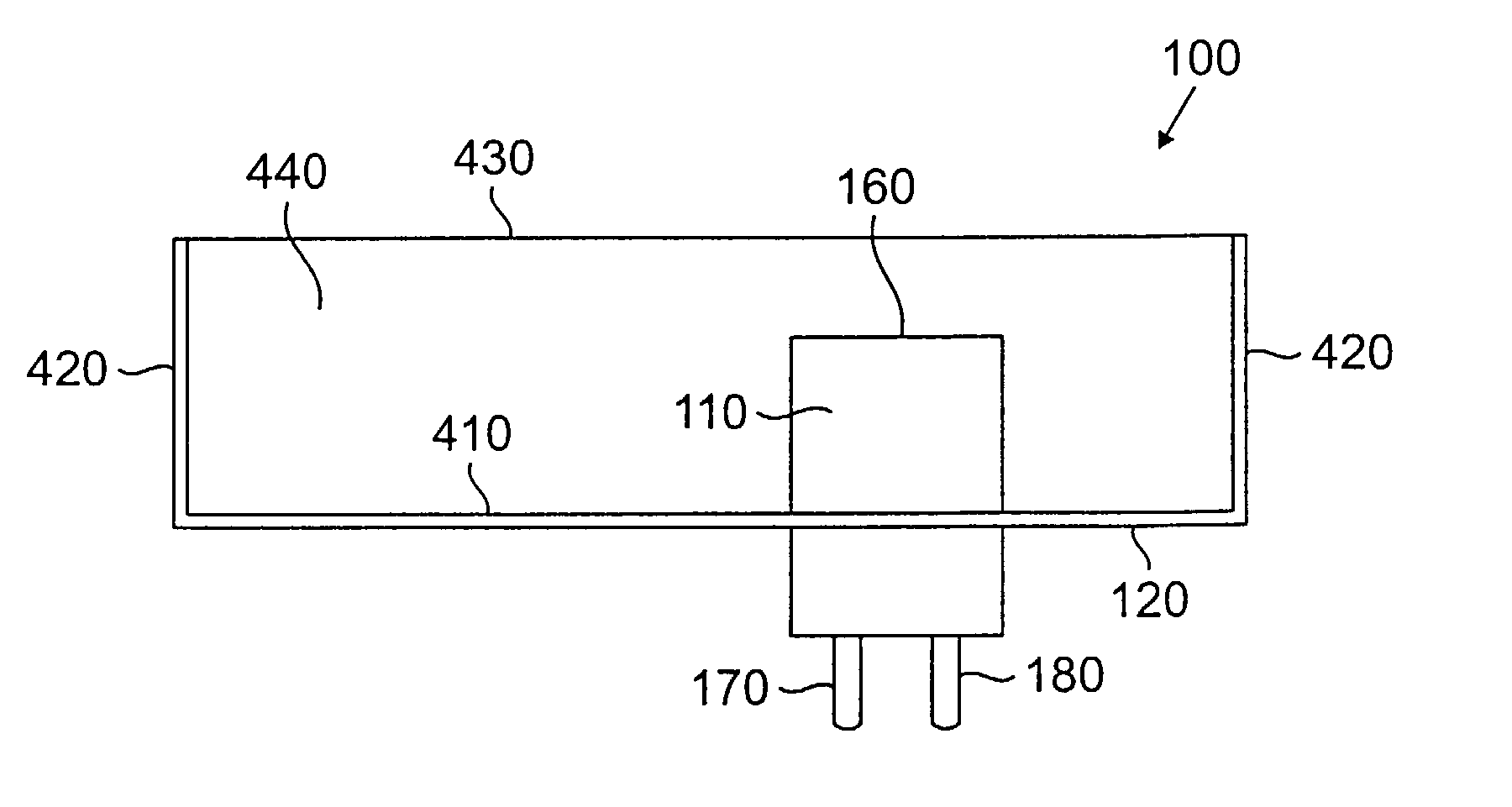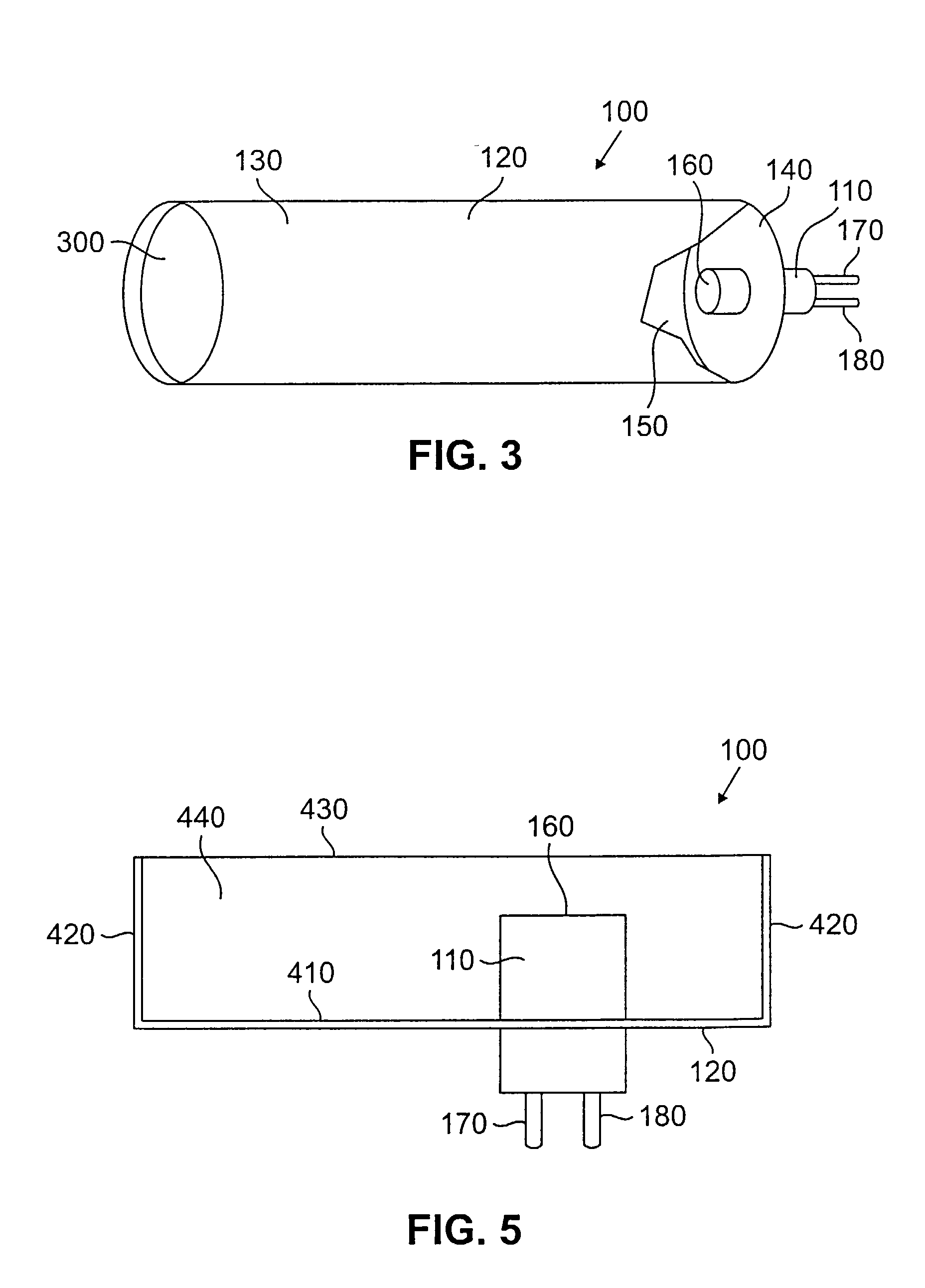Sensor and method for detecting very low frequency acoustic signals
a sensor technology, applied in the field of very low frequency acoustic signal detection sensors, can solve the problems of sensors becoming detached from the patient, affecting the patient's daily life,
- Summary
- Abstract
- Description
- Claims
- Application Information
AI Technical Summary
Benefits of technology
Problems solved by technology
Method used
Image
Examples
Embodiment Construction
[0038]FIGS. 1 and 5, discussed below, and the various embodiments used to describe the principles of the present invention in this patent document are by way of illustration only and should not be construed in any way to limit the scope of the invention. Those skilled in the art will understand that the principles of the present invention may be implemented in a suitably modified sensor.
[0039]FIG. 1 is a partially cutaway view showing an advantageous embodiment of sensor 100 of the present invention. Sensor 100 comprises a chamber 120 and a microphone 110. In this embodiment chamber 120 comprises a hollow tube having side walls 130 and end walls 140 that form cavity 150 within chamber 120. Cavity 150 of chamber 120 is filled with a fluid (not shown). The connections between side walls 130 and end walls 140 are sealed to prevent the escape of the fluid from cavity 150. The fluid may be either a liquid or a gas. In most instances the fluid that is used is air.
[0040]When the fluid that...
PUM
 Login to View More
Login to View More Abstract
Description
Claims
Application Information
 Login to View More
Login to View More - R&D
- Intellectual Property
- Life Sciences
- Materials
- Tech Scout
- Unparalleled Data Quality
- Higher Quality Content
- 60% Fewer Hallucinations
Browse by: Latest US Patents, China's latest patents, Technical Efficacy Thesaurus, Application Domain, Technology Topic, Popular Technical Reports.
© 2025 PatSnap. All rights reserved.Legal|Privacy policy|Modern Slavery Act Transparency Statement|Sitemap|About US| Contact US: help@patsnap.com



